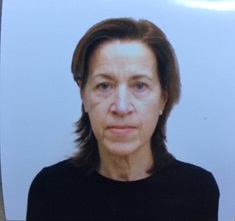Making a difference in the Bronx, one patient at a time
From time to time, I’ll be posting profiles of students who completed my program, the MBA in Healthcare Leadership, at SUNY Empire State College. Today, I am highlighting Anne E. O’Keefe, clinical director of Montefiore Medical Center’s community-based long term care program. Anne and her team have made important strides in bringing health services directly into Bronx communities that have a long history of being highly underserved.
In the past year, we have all become aware of how some groups have easy access to health services while other groups have great difficulty. Communities of color and economic stress in the Bronx are among the have-nots. Anne, who is also a registered nurse, leads a team that focuses on providing health-related services to those disadvantaged by social and economic disparities. They do so by providing the services directly in homes of residents.
I asked Anne to define the nature of the challenge. This is what she told me: “In communities with relatively healthy people, we find that end-stage chronic disease happens to people their 80s. Diseases such as diabetes and renal failure [kidney disease] are examples. In the communities in which I work, we are seeing the end-stages of those very same diseases happen to people in their 60s, a gap of twenty years.”
chronic disease happens to people their 80s. Diseases such as diabetes and renal failure [kidney disease] are examples. In the communities in which I work, we are seeing the end-stages of those very same diseases happen to people in their 60s, a gap of twenty years.”
What accounts for this huge difference? Anne attributes the problem to living in neighborhoods in which nutritious food is not sufficiently available or is too costly, are lacking in proper sanitation and safety, and have histories of inadequate education and access to good quality healthcare. It is not uncommon for her team to go into homes and see evidence of rodents, lead paint, and mold.
As noted, Anne’s program is home-targeted. They begin by performing extensive assessments of their patients’ capabilities to bathe, walk, go to the bathroom, and do other basic functions of everyday life. They also gauge their understanding of their medications, health lifestyle, and medical device needs. Team members evaluate the factors that contribute to health risk, such as financial and legal problems, poor employment opportunities, food insecurities, and inadequate support systems. Once they complete their review, the team develops a care management plan and arranges for all the necessary services. This includes making sure the patient is able to visit a doctor or go to the hospital when required.
Anne’s team prepares the patient’s support system to complement the care provided by the team. This can be quite a challenge since so many in the communities served by the program have little experience that would have prepared them for such an undertaking. For example, many rarely visit a medical practitioner until a health problem becomes serious. Family members and others in the patient’s support circle often do not know which questions to ask. Therefore, building a relationship with each family’s caregivers is vital.
The team is there for the long haul, often transitioning to support the caregivers when a patient passes away. Anne described the understandably distraught reaction of a daughter when both parents, who were in Anne’s program, recently passed away within a month of one another. The team member continued the relationship with the daughter, helping her get through the extended period of grief.

On a broader level, Anne sees the root problem as societal. She explains that if kids don’t develop good health habits when they are young, bad habits carry over into adulthood. She takes care not to be judgmental, understanding that, as she puts it, the choices made are often based on a lack of knowledge about proper health maintenance and an inability to access good care and afford nutritious foods. Anne is a strong advocate for a more generous and far-reaching health policy.
The work performed by Anne and her team is challenging, for sure. But they are tireless. Progress, though slow, is real. For example, inroads have been made in diabetes management and the incidence of co-morbidities. Little by little, Anne’s team has been able to chip away at a systemic health problem that prematurely robs so many of their lives.
I asked Anne what sustains her. She said that she loves her staff and is inspired by their devotion to making lives better. Throughout our conversation, her dedication to serving the community came through. It could be natural to feel discouraged by the breadth and scope of the challenge, but Anne sees each patient as an individual, a person who deserves to be treated with dignity and respect. The rewards come from seeing each get a little better, a little healthier day by day. And, she added, “The successes give you more than each failure takes away.”

